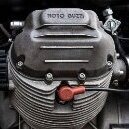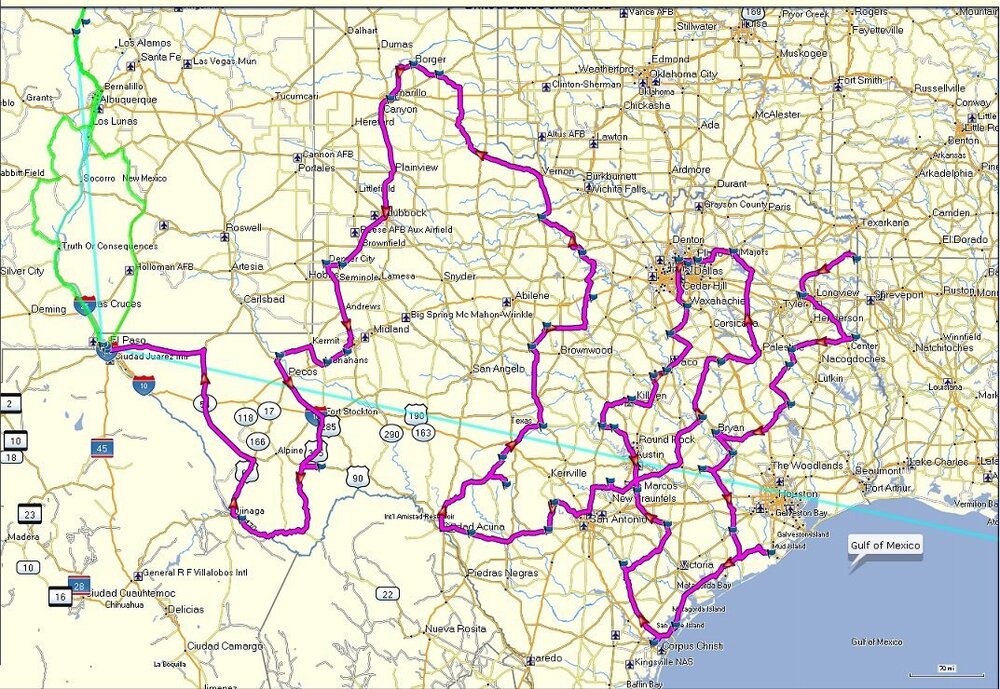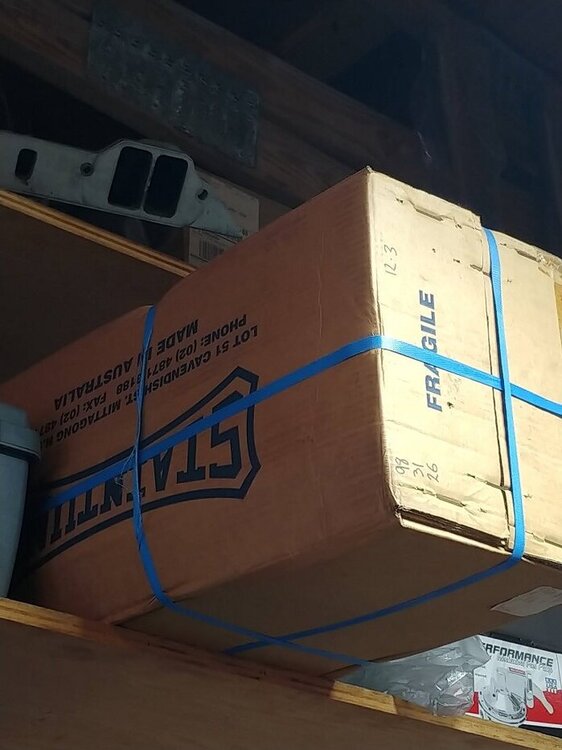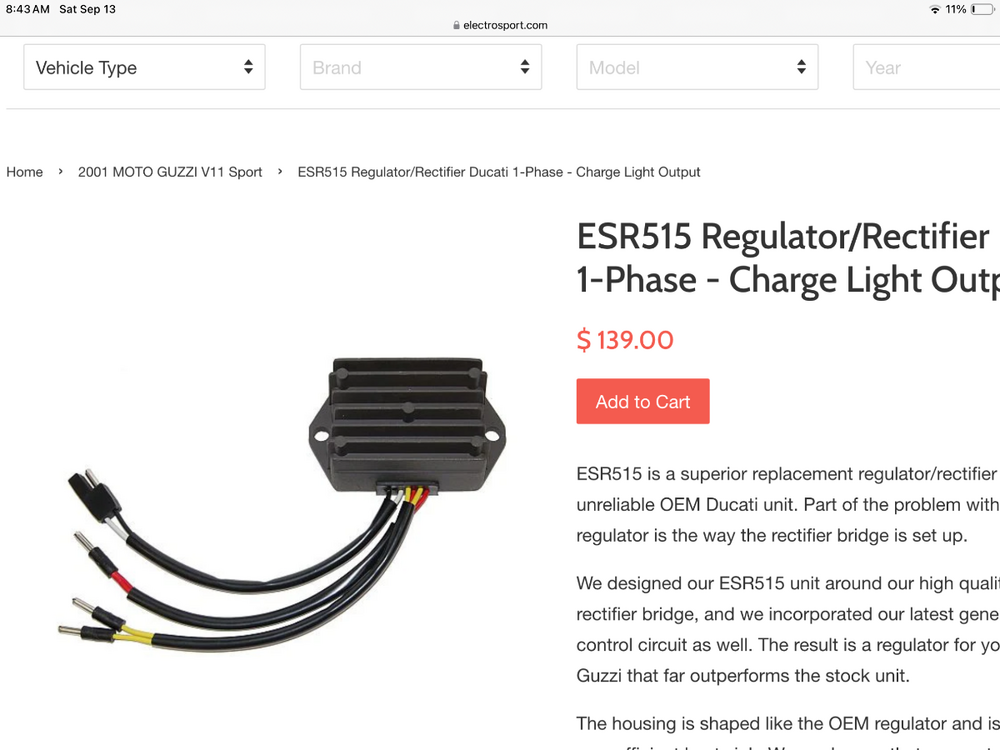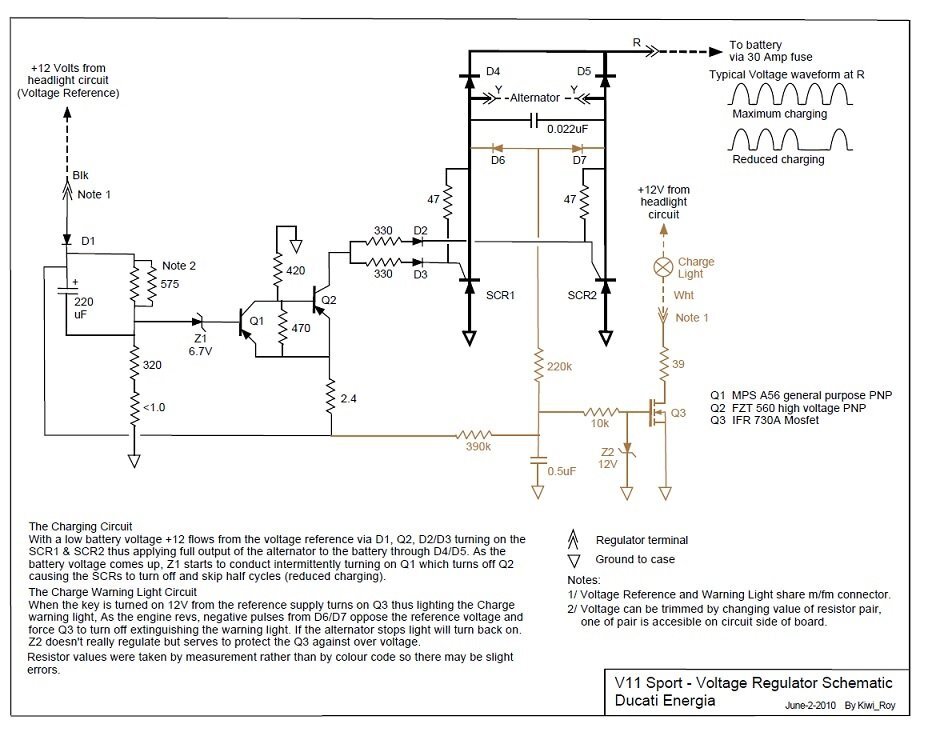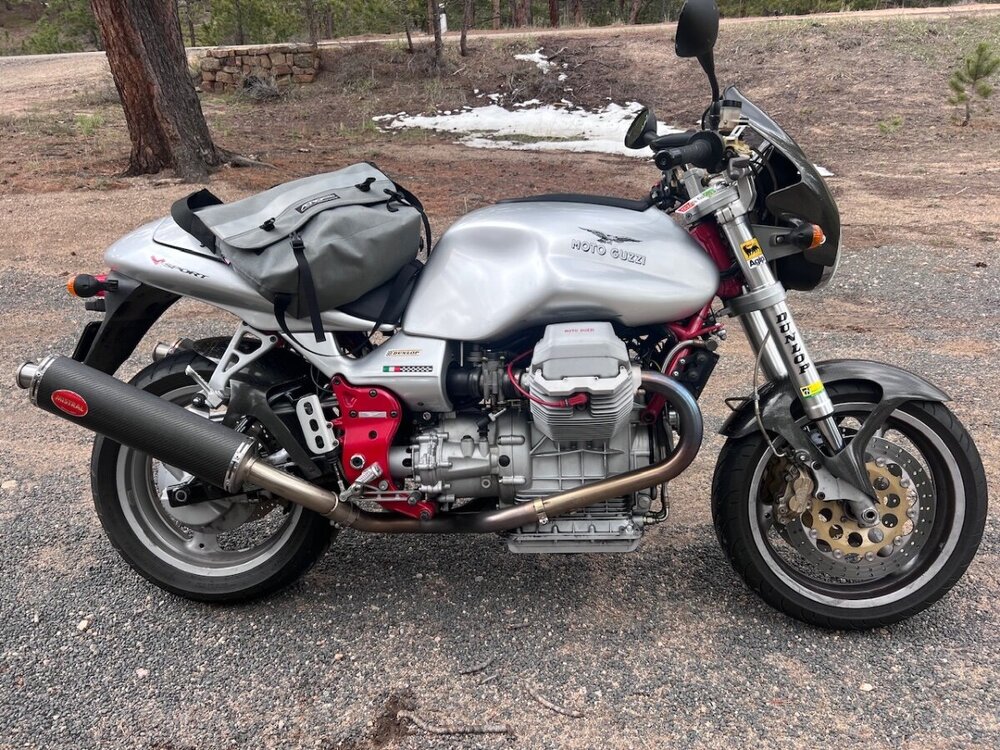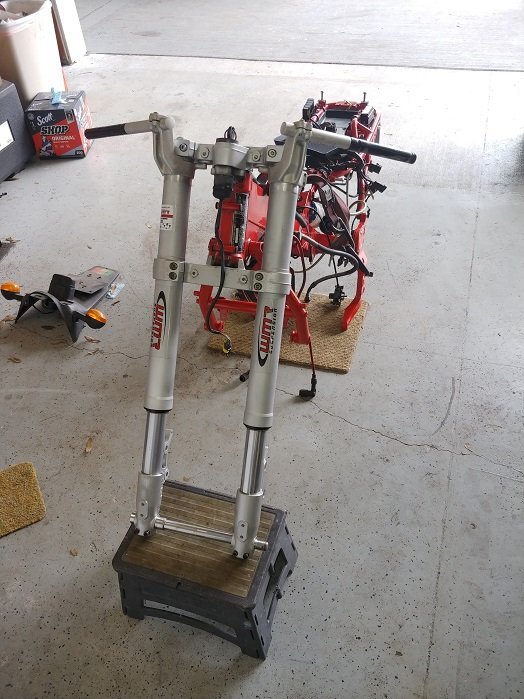Leaderboard
Popular Content
Showing content with the highest reputation on 09/16/2025 in Posts
-
The best sounding Guzzi ‘s in my mind are firstly when I was younger a yellow black 1100 sport come thundering off throttle slightly down hill into town he was going fast enough it lasted a good while I was awestruck secondly meet some bloke at a Lower Hutt motor cycle shop was standing out front admiiring a possibly sp1000 or similar big bored awesome pipes and running carbs anyway one big roll of the throttle down the street around roundabout and gone but the sound seemed to fill the atmosphere with a raucous delightful sound absolutely awesome my two favourite Guzzi sounds so far5 points
-
3 points
-
Sam , according to your post , after replacement........... So , this problem existed before you replaced everything. No light w/ KOEO, light on at high RPMs and overcharging. The problem is going to be with the charge light circuit. Since the light does not come on KOEO , With the KOEO , disconnect the connector w/the black wire and white wire. First use a test light and ground the white wire of the engine harness and see if the light comes on. If not use a jumper wire to see if the light comes on. If it still does not come on the problem exists in this circuit.3 points
-
3 points
-
@mikev I'd be inclined to try the extraction. My motto is give it a shot and be willing to call in the experts if I screw it up beyond my abilities. Fortunately, I've never had to call in the experts, and so have become (if not adept) capable at many endeavors. Also, I'm cheap. Also, the beer will taste much better as you look upon your success. I recently sheared the small kickstand bolt that goes into the sump. A little scary, but took it slow and got it out. Agree with advice previously given in this thread (extractor), but FWIW, I got my sheared bolt out by drilling several small holes along the diameter of the shank to make a slot, then a flat-head screwdriver did the trick. Good luck!3 points
-
2 points
-
When you say "Do the troubleshooting as I described" I assume you are referring to your post a few hours ago in which you linked the workshop manual from Guzzitech.com? Or, are you referring to the Electrosport flow chart you linked I believe yesterday? (I wish this otherwise excellent forum had sequential numbers on the posts in the subforums, maybe @Admin Jaap could do it? Numbered post are easy to reference, of course).2 points
-
I don't think so (for our V11). Yet, issues with this connector (indicator light and reference voltage) or its course of wiring/ connections might involve both the light behavior and the actual charging fault . . . I had to seal mine at some point . . .2 points
-
No, Merlin and gardens are mutually exclusive. I had a nice garden once and then we got a dog, sigh. Phil2 points
-
Just to be clear, are you suggesting that a faulty charge light circuit could be causing the low voltage output from the regulator? If so I will go through your troubleshooting recommendation. This morning I made new butt connections on the stator to regulator yellow wires, and the DC voltage from the regulator is still only 12.3v at idle, and does not increase when revved up.2 points
-
Something wrong with your map . . . It says “ Gulf of Mexico” . . . twice!2 points
-
2 points
-
2 points
-
We discovered at the SSR a couple years ago that the taillight on my 'Sport would come on by itself after an hour or so. No key anywhere. Relevant to this thread, it was the ignition switch goo come to life as a capacitor.2 points
-
Knowing the level of sophistication of the Italian electrical system . . . It could well happen2 points
-
2 points
-
2 points
-
2 points
-
2 points
-
2 points
-
2 points
-
Ah, yes, that system is not charging at the battery at all. It should be 13.8-14.2vDC at some rpm, idle somewhat lower, but not that low. Those yellow alternator connectors do benefit from a clean, tighten, and seal. Some folks eliminate the connectors and hard wire there to eliminate that potential trouble spot. Still a mystery why there is no battery light KOEO. I am still suspecting an open connection somewhere: across the 30 fuse or an errant ring terminal that got left off either the positive or negative battery terminal. Also, cannot rule out a faulty new part (R/R). There's a name for that . . .2 points
-
I would like to have seen the factory airbox in the pile to "return it to original" . . . Chicks run off with these things all the time.2 points
-
I'm referring to the troubleshooting that I described in my post, but going through the Electrosport flow-chart looks like a good idea too. PS: regarding quoting or referring to posts: if you right-click on the "time-stamp" at the top of the relevant post, chose "copy link address" from the menu that appears, and paste that into your reply, you get this: I think that is what you are looking for in that regard.1 point
-
Perhaps it could be valuable to specify that the reference voltage comes from Relay #2. Sure, that supplies the headlight but also the brake light, horns, tachometer, power to the "warning lights" (including the battery light), as well as the reference voltage to the regulator.1 point
-
I beg to differ. Look at the V11 wiring diagram here, page 364 https://guzzitek.org/gb/ma_us_uk/1100/V11_1999-2003_Atelier(Compil-GB-D-NL).pdf Ok, I see you have posted again whilst I was writing and checking my sources, and have seen it already, but I will continue for the sake of general edification. When the key is switched on, the lighting relay switches on and provides power through a red-black wire to the entire lighting circuit, and the oil light, fuel light, tacho (power, not the back-light), and the reference voltage for the regulator. After the charge warning light, a light blue wire goes to the regulator. The regulator switches this to ground when the charging voltage is below the battery voltage (key on, engine off, or the alternator has failed), causing the charge warning light to light up. So: the presence or absence or functionality of the charge warning light can not have any influence on whether the charging system works or not. and, the reference voltage supply is the same one that causes the warning lamp to light up, actually, but the two functions (reference and warning) are completely independant of one another. It's like they "stole" a bit of the reference voltage to light the lamp. I find that somehow weird, but apparently it works.1 point
-
So, no, the charge lamp does not 'activate' the regulator. The headlamp circuit supplies voltage to both the regulator and the charge lamp, and the internals of the regulator do in fact 'balance' the voltage to the indicator lamp. With regards to our symptoms, the lamp is a clue; it will be dark *any time* the headlamp circuit is dead...and most of the time while it's live. The only time the lamp is *supposed* to come on is when the Battery, via the HL circuit, has more voltage than the regulator is outputting.1 point
-
I remember that BMW's use the charging indicator light as part of the charging regulation system. If the charge light bulb burns out then you get nothing out of the alternator. Left me stranded on the side of the road in the Isle of Mann in 1984. Not sure if it's applicable to the V11 system though. Phil1 point
-
1 point
-
I love an optimist. The bikes been out of production for almost 20 years but you're in luck I have a valve cover tree in my yard and I'll pick you some and send them over, lol. Phil1 point
-
The weird thing is that the lamp is not coming on when the ignition is switched on, but does light at higher revs. I'm referring to the schematic of the original regulator from Kiwi Roy that I attached here and to the wiring diagramme on page 364 of this workshop manual, which I believe is the correct one for the bike https://guzzitek.org/gb/ma_us_uk/1100/V11_1999-2003_Atelier(Compil-GB-D-NL).pdf The lamp comes on at higher revs, so we know for sure it is getting power, at least under those conditions. The power arriving there is shared by the oil light, the fuel level light, and the tacho. As I understand the diagram, it is not the tacho backlight, so if the tacho is working at all engine speeds, I'm assuming the power feed to the charge lamp is there all the time (for now) as the feed appears to be the same one that powers the tacho. Therefore, I suspect some sort of intermittent contact, in the lamp or on the way to the regulator, that is finding contact due to vibration a higher revs only. Bear in mind that an incandescent light bulb reacts slowly, so a barely separated contact that is finding intermittent contact due to vibrations could well be enough to make it look like it is lighting constantly. Referring to the Kiwi Roy schematic, the warning light comes on when the regulator switches the line coming from the warning light to ground. Therefore, contacting that wire to ground to check the lamp, as @gstallons suggested, is the way to check the lamp. According to the wiring diagram, however, that wire is light blue, not white. Whatever, given the described behaviour, if the lamp doesn't come on (Key on, engine off) with that light blue wire connected to ground, I would start the engine and see what happens at the engine speed at which it has been coming on. This is to test the "intermittent connection" theory against "the regulator is doing weird things". If it looks like there is an intermittant connection, it could be in the lamp itself, or in the socket. The next step along is in the connector number 8 at the bottom left of the wiring diagram, which I understand is the connector from the loom to the dashboard. After that, the connector at the regulator. Or a break in the actual wire. To cross check... Put the multi-meter on the Ohms setting, and measure the resistance (key on, engine off) between the connector on the regulator that the wire from the warning lamp connects to and ground (engine casing, battery minus...). That should be very close to zero(as I said, key on, engine off). Then start the engine. If the regulator is doing the right thing, the resistance should now be very high, effectively infinite. If not, the first guess is that the volts from the alternator aren't getting into the regulator, or the regulator might be dodgy. Now rev the engine slowly up to the revs at which the lamp was coming on. If the measured resistance was very high (infinite) right from the start and suddenly drops at high revs, it would seem that the regulator is doing weird stuff that I can't explain right now. I rather suspect that the measured resistance will turn out to be close to zero the whole time. That would indicate that the regulator isn't getting the volts from the alternator (or is faulty) and that there is an intermittent, vibration sensitive fault in the warning lamp circuit preventing the lamp from lighting all the time as the switch in the regulator is "telling" it to. In other words, I think it is possible that there are two problems happening simultaneously making it difficult to find either one.1 point
-
Maybe Key On, Engine Off...also a possibility. Do you have an external voltage reader attached to the battery to check volts, while off and while running? https://www.amazon.com/dp/B0CJXTMT3Z?ref=ppx_yo2ov_dt_b_fed_asin_title&th=1 https://www.amazon.com/dp/B00DJ5KE9A?ref_=ppx_hzsearch_conn_dt_b_fed_asin_title_21 point
-
1 point
-
1 point
-
“KOEO” . . . That acronym makes my head spin . . . On or Off???1 point
-
Coveted, maybe. Easy to pack for shipping, definitely not.1 point
-
Was kinda my point. Probably won't crash, will in all certainty tip over in a parking lot.1 point
-
These are the bees knees . As long as you can find them ! Every workshop needs them along with roll pin punches. Which is what I thought was in that particular drawer !1 point
-
I need to see if my red frame has one or not and then I will commit1 point
-
1 point
-
1 point
-
Awesome. So as Phil said early, the headlight circuit is the voltage reference source, and the regulator actually uses reference to turn the lamp on and off, not a simple balancing act. So now there are 2 considerations, the reverence voltage and the delivery voltage. Easy enough to verify reference, via connectors all the way to the regulator. If the reference matches battery voltage *with key on*, then it's a delivery problem; that has 2 elements, the VR itself and the delivery circuit.1 point
-
1 point
-
Plugs to stock harness, has charge lamp circuit. Should be a no-brainer. 'Still collating data', Ash would say.1 point
-
To each their own. But my experience is that faster speeds don't mean less force to the head, in fact the opposite can be true. A crash at speed can be a nice smooth low side, in which case less force to the head is likely vs just falling over from vertical. But, as mentioned, to each their own. If you knew how you were going to crash perhaps a better choice would be not to crash....1 point
-
Thanks for the reminders gentlemen, I have attached a post-it note to my desktop monitor as the fail-safe reminder. I will try to get out bright and early on Sat.1 point
-
Rut Roh the Demon raises it's ugly head again. I think Power Commanders are universally despised by anyone not selling them. Before any root cause can be determined, a thorough precision tune-up is mandated. Also, both my '97 1100 Sport-i and my 2000 V11 Sport had a large differential in the injectors. After a quarter century, they need serviced. https://www.injectorrx.com/1 point
-
1 point
-
Hoping to see some updates from our dear friend, @p6x . . .1 point
-
I know turning 137,000 miles doesn't seem like much to celebrate. But I'm celebrating, anyway. ( I intended this to be my 20,000th post, but I used that to reference fixing a broken link that @mikev had pointed out. As it should be, I reckon! )1 point


